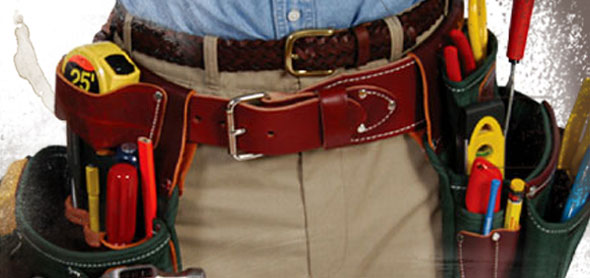I’d like to go over some common safety harness accessories. Specifically belts, padding, and lanyard keepers. Learn how these accessories work, and if they can help you.
Belts (Sewn In/ Removable) - Belts are usually found on what the industry calls “construction” harness. (These are not the only harnesses that can be used in the construction industry.)
Belts are available in a wide variety of options. Some belts are removable from the harness, while others may be sewn into the harness. Belts are most commonly found with a tongue buckle strap, but some models do use the quick connect buckle as well.
Another common attribute found on a harness belt is padding. This padding can offer support for your back and provide extra comfort for workers that find themselves in a safety harness for days at a time. And finally, some harness belts can double as a tool belt to keep your gear handy, even while wearing a harness.
Belts are some of the most common accessories available for harnesses, and they can meet a wide variety of applications. Think it over, and determine if a belt is an add-on that is going to help on the job, or will it get in the way?
Padding - Add extra padding to a harness, and you will add dollars to the cost of your harness. This is just a simple fact, I wish it were different, but it’s not. Although, this isn’t necessarily a bad thing.
The lack of padding on entry-level and basic harnesses allows individuals to save money on safety gear they may only use once every couple of weeks. The lower cost makes it easier for people to invest in their safety. Remember, regardless of padding and cost, every harness must meet the same safety standards.
Like dollars, harness padding is also directly related to the comfort of the harness. The more padding utilized in an ergonomic design is going to be infinitely more comfortable than a basic harness.
Take some time and think about how often you will be wearing and using your harness. Will you be spending eight hours a day in a safety harness? It might be a good idea to invest in the extra padding. Your body will thank you. If you’re an employer buying for your crew, a little bit of extra padding in the harness could make you boss of the year!
Lanyard Hooks/Keepers - Lanyard Hooks, which are also called lanyard keepers, have become more popular in recent years. These are smaller rings and clasps located on the shoulder straps of the harness near the chest strap. Please note: We’re not referring to shoulder d-rings, which would be found high on the shoulders, or chest d-rings, which would be located in the center of the chest strap. (Lanyard Keepers can be made of metal, plastic, or webbing)
You may have seen these little hooks/straps, and wondered what they’re for? Well, I will explain... The lanyard keeper is designed to be an intermediate buckle. You keep one end of your lanyard attached to the dorsal D-ring and the other end attaches to the lanyard keeper. This keeps your lanyard off the ground when it’s not in use. Pretty handy huh? These little attachment points also work well with dual leg lanyards by keeping the second leg out of the way when you’re not using it.
Is this something that you would be beneficial to you or your crew? Look for a harness that features lanyard keepers.




